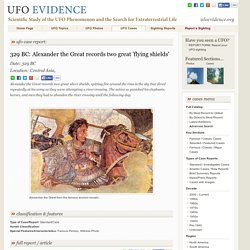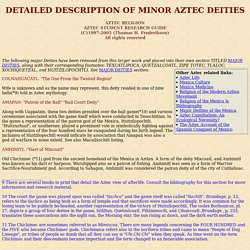

The Legendary Origins of Merlin the Magician. Most people today have heard of Merlin the Magician, as his name has been popularized over the centuries and his story has been dramatized in numerous novels, films, and television programs.

The powerful wizard is depicted with many magical powers, including the power of shapeshifting and is well-known in mythology as a tutor and mentor to the legendary King Arthur, ultimately guiding him towards becoming the king of Camelot. While these general tales are well-known, Merlin’s initial appearances were only somewhat linked to Arthur. It took many decades of adaptations before Merlin became the wizard of Arthurian legend he is known as today. Merlin the wizard. Credit: Andy / flickr It is common belief that Merlin was created as a figure for Arthurian legend.
Merlin was created as a combination of several historical and legendary figures. A giant helps Merlin build Stonehenge. Many years after Geoffrey’s Historia Regum Britanniae, Robert de Boron composed a poem called Merlin. Sources: 329 BC: Alexander the Great records two great 'flying shields' - Central Asia, - 329 BC. Alexander the Great from the famous ancient mosaic.

Classification & Features Type of Case/Report: StandardCase Hynek Classification: Special Features/Characteristics: Famous Person, Witness Photo Full Report / Article Source: Bruno Mancusi, UFO Updates mailing list, Apr. 18, 2003 [go to original source] Alexander the Great records two great silver shields, spitting fire around the rims in the sky that dived repeatedly at his army as they were attempting a river crossing. UFO researcher Bruno Mancusi, in a posting on the UFO Updates mailing list from April 18, 2003, gives the following references to this event. I had an e-mails exchange in 2001 with a Macedonian historian, Aleksandar Donski, about this tale. 1. Alexander the Great was not the first to see them nor was he the first to find them troublesome. Unfortunately, there is no reference. 2. "L'assedio di Tiro Durante l'assedio di Tiro nell'anno 332 a. (See English translation by Drake below.) 3. Sumeria. Curse of the pharaohs.

The curse of the pharaohs refers to an alleged curse believed by some to be cast upon any person who disturbs the mummy of an Ancient Egyptian person, especially a pharaoh. This curse, which does not differentiate between thieves and archaeologists, allegedly can cause bad luck, illness or death. Since the mid-20th century, many authors and documentaries have argued that the curse is 'real' in the sense of being caused by scientifically explicable causes such as bacteria or radiation. However, the modern origins of Egyptian mummy curse tales, their development primarily in European cultures, the shift from magic to science to explain curses, and their changing uses—from condemning disturbance of the dead to entertaining horror film audiences—suggest that Egyptian curses are primarily a cultural, not exclusively scientific, phenomenon.[1] Tomb curses[edit] There Were Giants Upon the Earth.
Who are the "sons of God" and the Nephilim in Genesis 6:4? Dutt). Curse of the pharaohs. Aztec Religion - AZTEC GODS - Aztecs of Mexico History. AZTEC RELIGION AZTEC STUDENT RESEARCH GUIDE (C)1997-2005 (Thomas H.

Frederiksen) All rights reserved The following major Deities have been removed from this larger work and placed into their own section TITLED MAJOR DEITIES, along with their corresponding footnotes: TEXCATLIPOCA, QUETZALCOATL, ZIPE TOTEC, TLALOC, XOCHIQUETZAL, and HUITZILOPOCHTLI. See MAJOR DEITIES section. COLNAHUACATL- "The One From the Twisted Region" Wife is unknown and as the name may represent, this deity resided in one of nine hells(*9) told in Aztec mythology. AMAPAN- "Patron of the Ball" "Ball Court Deity" Along with Uappatzin, these two deities presided over the ball game(*10) and various ceremonies associated with the game itself which were conducted in Tenochtitlan. AMHIMITL -"Dart of Mixcoatl" Old Chichimec (*11) god from the ancient homeland of the Mexica in Aztlan. ____________________ 9 There are several books in print that detail the Aztec view of afterlife.
ATLACOAYA- "Pulque God" 19 Alacaron, notes p. 230.